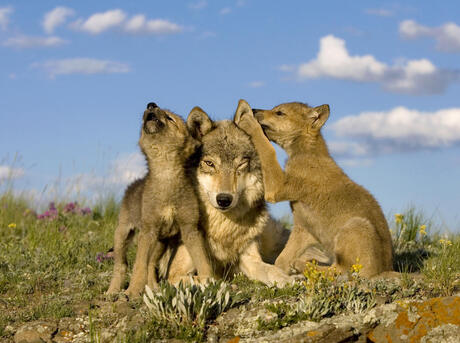
Photographer Sets Off on Worldwide Expedition to Document Dogs in Their Natural Habitats

**Exploring the Realm of Dog Breeds Through the Eyes of Craig Turner-Bullock**
In a remarkable project that intertwines his passion for dogs, travel, and photography, New Zealand’s pet photographer [Craig Turner-Bullock](https://furtography.co.nz/) has been capturing dog breeds in their native lands as part of his *Dogs of the World* initiative. This original and sincere effort has brought him to over 20 countries, more than 50 cities, and enabled him to photograph 60 distinct dog breeds to date, with intentions to expand further. What started as a fortunate collection of photos—featuring a French bulldog in Paris, a pit bull in New York, and a corgi in London—swiftly transformed into a comprehensive international venture.
### The Birth of *Dogs of the World*
Turner-Bullock’s photographic journey commenced by chance during his travels. Recognizing the potential to feature various dog breeds within the landscapes from which they emerged, he began to deliberately seek these moments. “Some of the dogs have been photographed in the exact places the breeds were founded,” he shared in an interview. This includes scenes such as capturing dandy Dinmont terriers at Bowhill House in Scotland, where the breed has its roots.
Even when the origins of certain breeds are somewhat ambiguous, Turner-Bullock creatively places them in locations with rich cultural or historical significance. For instance, corgis have become closely associated with London due to their prominence with Queen Elizabeth II, even though the breed’s true origins lie in Wales. *Dogs of the World* showcases the photographer’s ability to strike a balance between heritage and contemporary connections.
Another instance involves the Australian shepherd, which was developed in the United States. Turner-Bullock photographed these herding canines in Australia, referencing the fact that some of the collies used in creating the breed were originally brought from there. His respect for historical and cultural intricacies, combined with artistic representation, makes the *Dogs of the World* series particularly engaging.
### A Worldwide Expedition Documenting Iconic Breeds
Turner-Bullock’s project has been a heartfelt undertaking, evolved over the years as he journeys from one locale to another. The series serves not only as a homage to individual breeds but also highlights the diverse natural landscapes that reflect the environments where each breed would traditionally excel. From herding dogs like the Border Collie in their native Scottish borders to the hardy Icelandic Sheepdog in Iceland’s rugged terrain, each image encapsulates the essence of the dog’s connection to its birthplace.
While the logistics can pose challenges—juggling between cities, dog owners, and the often unpredictable nature of canine subjects—Turner-Bullock remains fervent. “Every one is special,” he expresses regarding the breeds he has encountered. Some photo sessions have entailed overcoming severe weather conditions or finding ways to connect with the dogs in order to showcase their individual personalities and heritage.
Most recently, Turner-Bullock’s Kickstarter campaign for *Dogs of the World* garnered successful support, and he aims to have the book available for readers by December 2025. Before then, however, he plans to feature an additional 20 to 30 breeds in the series, bringing his total documentation to 80 or 90 breeds overall. This endeavor will necessitate more global travels, including aspirations to photograph the Dalmatian in Croatia, its country of origin, and the larger-than-life Tibetan Mastiff in Tibet.
### What Sets *Dogs of the World* Apart?
One of the unique features of *Dogs of the World* is its departure from conventional studio-based pet photography that many associate with the genre. Instead, Turner-Bullock’s work celebrates not only the animals but also the geographical and historical landscapes they are associated with. By placing the dogs in expansive, cinematic backdrops, the photographer pays tribute to the heritage and working-class beginnings of numerous breeds, especially those bred for specific tasks like hunting, herding, or guarding.
For example, many herding dogs possess an intrinsic bond with open fields and wide pastures—environments that Turner-Bullock mirrors in his artistic endeavors to highlight the harmony between breed and habitat. Moreover, royal breeds like the corgi are often depicted in settings that reflect their noble history.
Highlighting dogs in their native lands also underscores the cultural and historical significance of breeds as working animals, family companions, and emblematic figures. It invites viewers to recognize not just the visual grace of these canines but also the diversity and richness enveloping their narratives.
### Looking Forward: The Series’ Future
By 2025, the completed *Dogs of the World* book will feature some of the most cherished breeds from various continents. Turner-Bullock is particularly enthusiastic about capturing more Asian breeds, such as the